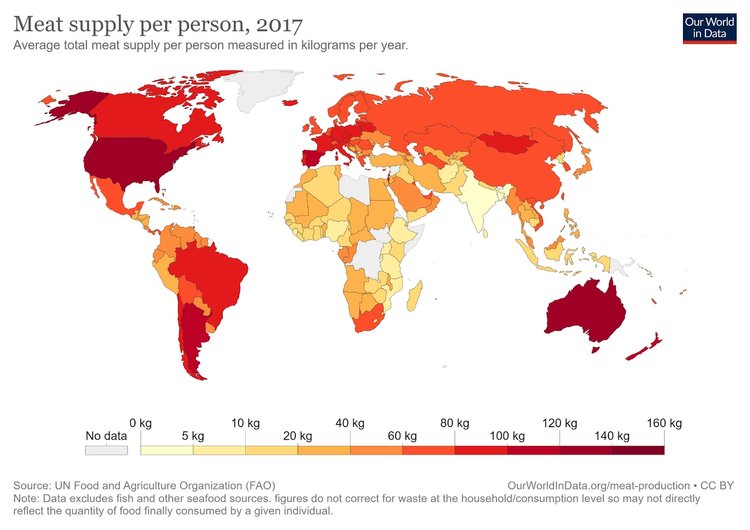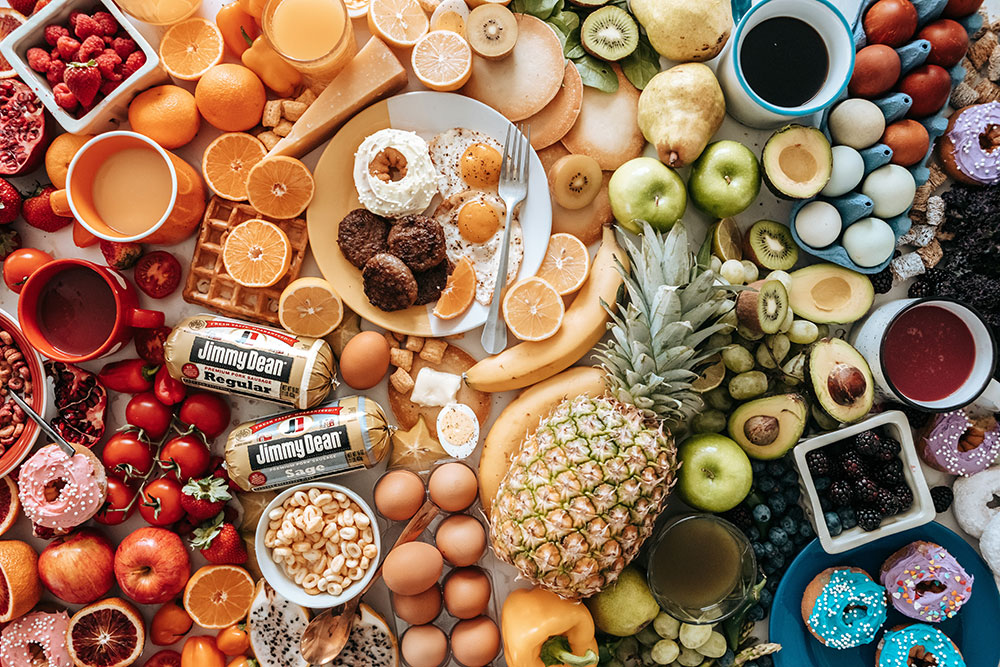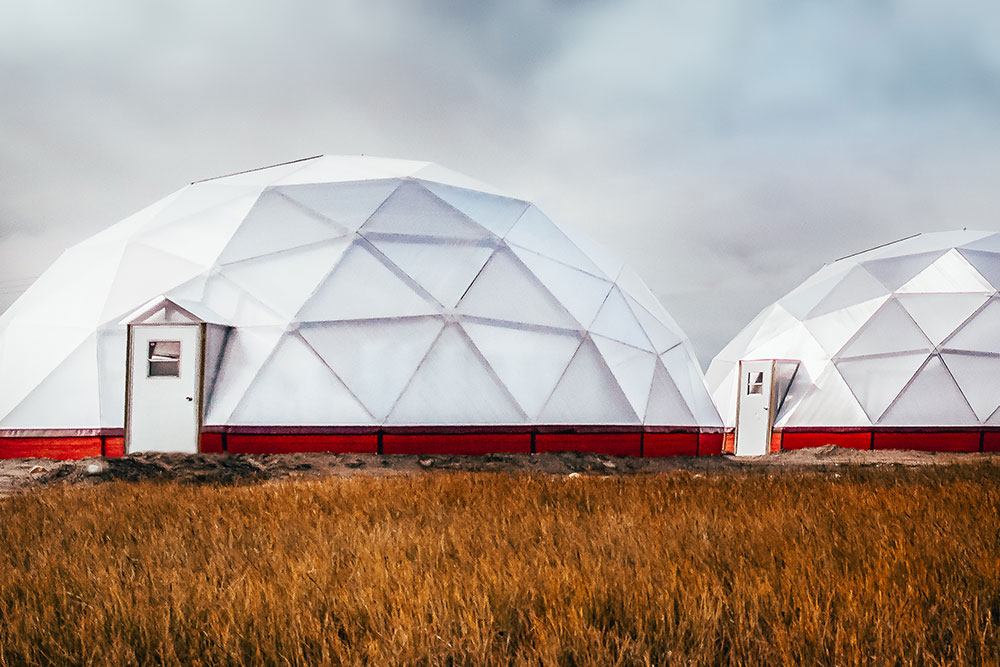

I lose count of how many potential diets exist today. Some are plant-based (e.g., vegetarian, flexitarian and vegan diets, the latter is exclusively plant based). Others include lean meat and fish (Paleo diet) and others exclude certain foods with saturated fats and added sugar (e.g., Mediterranean diet). Every day, it seems like a new diet concept is popping up in the news and it is hard to keep up with all the subtle differences among them. However, the question of which diet a person should follow for ideal health is as nuanced and complex as people themselves.
In a biological sense, humans are omnivorous like many other animals close to our hearts: squirrels, chimpanzees and pigs. This means we are able to eat plants, animals and fungi and we choose what to eat, based on what is available in our surroundings. Before the agricultural revolution, we would forage for fruits, vegetables and sometimes hunt mammals to feed ourselves and our tribe. The hunter-gatherer culture still exists in today's world, but the commodity of growing our own fruits/vegetables, cereals and farm animals, has become common in modern society around the world. Domestication and agriculture differentiated us from other omnivores and the consequences of the growing exploitation and modification of our natural resources, as well as the ethical concerns surrounding our unsustainable way of eating, has been a hot topic in the last decades. But what if we look back in time and think of our biological self: omnivores? From what we can eat, plants make up 80% of the total biomass of living organisms on planet Earth, followed by 2% of fungi and 0.4% of animals, from which half are insects. Humans represent only 0.01% of the total biomass on the planet. Excluding all the poisonous organisms that could kill us, plants are definitely the most available food source on the planet. We see plants across a broad range of biomes, from the deserts to the arctic. Plants thrive even in our cities. Plus, they are quite easy to catch (it’s not like they would start running from us). Fungi are next on the list. A source of non-animal vitamin D2, B12 and overall with more protein content than vegetables, they seem like a promising solution for people following a plant-based diet. However, our history with mushrooms was not always positive. Until we managed to understand which mushrooms would kill us, give us a stomach ache or get us high, the trials and errors were enormous. Fortunately, we have managed to domesticate them, as we did with plants.
Then why eat animals? Animals provided a significantly higher percentage of protein than most plants and mushrooms (with a few exceptions, 26 g/100 g in beef vs. 81 g/100 g in soybeans) and heme iron. Iron is an essential mineral for our red blood cells (hemocytes) since it is the major component of hemoglobin, the protein that carries oxygen from our lungs to the rest of our body. Iron deficiency can cause anemia. Heme iron is derived from the hemoglobin of animals and is found in meat, poultry and seafood. Non-heme iron is mostly present in nuts, legumes and leafy greens, such as spinach leaves. Heme iron is absorbed 2 to 3 times more efficiently by the human body than non-heme iron, and having meals composed of vitamin C and heme iron food sources (i.e., meat) can improve the absorption of non-heme iron present in legumes. People following a plant-based diet, such as vegetarians and vegans, are recommended to eat twice the amount of foods rich in iron than people including meat in their diets. But the absorption of non-heme iron can be improved by eating more fruits and vegetables rich in vitamin C. Supplements of iron and vitamin C are recommended in certain groups (e.g. infants and pregnant women) when following a plant-based diet.
Vitamin B12 is another important nutrient that, like iron, is essential for blood cells but also for a healthy brain function. B12 available for humans is mainly present in meat (3 to 83 μg/100 g) and fish (3 to 159 μg/100 g), compared with the residual presence of B12 in some vegetables (<1 μg/100 g) or mushrooms (<1 μg/100 g). People following a vegan diet are highly recommended to take on supplements or fortified foods.

Spinach leaves are famous for their big amounts of non-heme iron and to give super strength to the iconic sailor Popeye. Source: Pixabay by Seguir.
Despite the big sources of nutrients essential for our bodies, meat is the main diet of several communities living in harsh conditions in regions that don’t allow for agriculture. An example of this is several arctic communities, in which the icy and silent environment is not favourable for plant growth. With our diverse diet, humans were able to prosper even where the most abundant beings (i.e., plants) would perish.
Meat became more abundant after the agricultural revolution. First, we learnt how to grow cereals, vegetables and fruits and then we started domesticating animals. Through domestication, humans gained easier access to animal derivatives such as milk, which we evolved to be the only mammal to digest in adulthood. This allowed for the improvement of food consumption, from vegetables to meat, and, instead of spending time searching for food, we could spend it on other things, like building kingdoms, creating entertainment for our lazy days and finding new ways to spend our new-found “freedom”. With time, we have turned our food systems into well-oiled machines that are very efficient in producing volumes of food with much less toil! However, everything comes with a price. The green revolution brought fertilizers, pesticides and antibiotics, allowing our population to boom and build the society we know today. We still are biologically omnivores, but we have stopped looking at food in terms of what is available in our surroundings, but as what is available in a supermarket. We have become disconnected from nature.
Some might say that the step towards sustainability is a diet predominantly based on plants, but this is not so clear cut. Nowadays, some are in a privileged position, in which they can select and afford sustainable alternatives (note that not all of them are) towards a plant-based diet and guarantee a healthy lifestyle. But that is a low percentage of the world population. The problem of unsustainable eating, which now is mostly driven by an abundant consumption of animal products, is mostly present in developed countries. Due to the low income and economic situation in developing countries, meat consumption is not affordable, but with the growth of economies and people becoming richer, this will change. The demand for unsustainable foods, especially meat will inevitably increase. However, for me it is unthinkable to ask people, who waited years to enrich their diets with more nutritious foods, to deprive themselves of meat and go plant-based.

The highest meat supply is observed in developed countries or fast-growing economies. Source: Meat supply per person 2017 by Our World in Data.
Our future as a species should always be based on our biological and natural self, omnivory. However, an average American, who is known to eat the most meat (146 kg per year in 2017), has a diet composed of approximately 25% of meat, dairy and eggs, which is four times more compared to our fellow cousin chimpanzee (6% of meat and eggs). There is no problem with eating meat per se, the problem comes from a lack of balance. The success of our evolution as a species started with us being able to eat a bit of everything, jack of all foods, master of none.
What is most available among your surroundings? Do you see plants? That’s the top of the list. Meat is lower in abundance. The fewer portions on our plate is a reflection of its occurrence in nature. Can you exclude it completely? Great! And, although that point is impossible for some communities in which meat is the only source of food and comes from sustainable hunting, the ones that can choose from a greater variety of food should avoid overconsumption, as they are what makes up for unsustainability. Albert Einstein once said, “Look deep into nature, and you will understand everything better”.

All the colours on your diet, giving priority to fruits and vegetables is a good way to stay healthy. Excesses ruin your diet and the planet. Source: Unsplash by Jimmy Dean.








